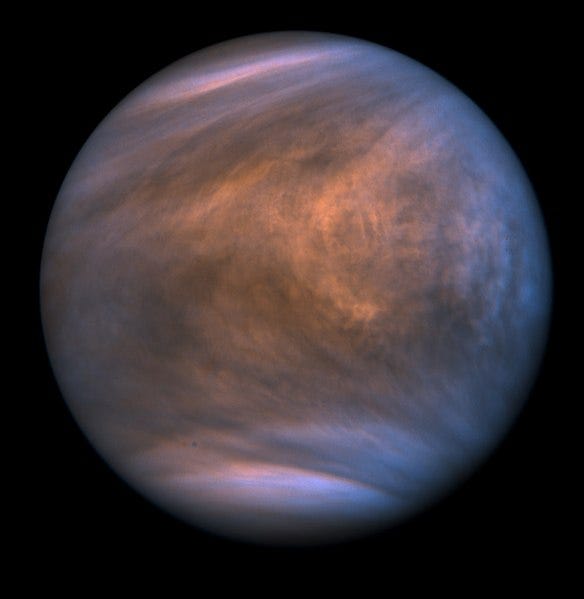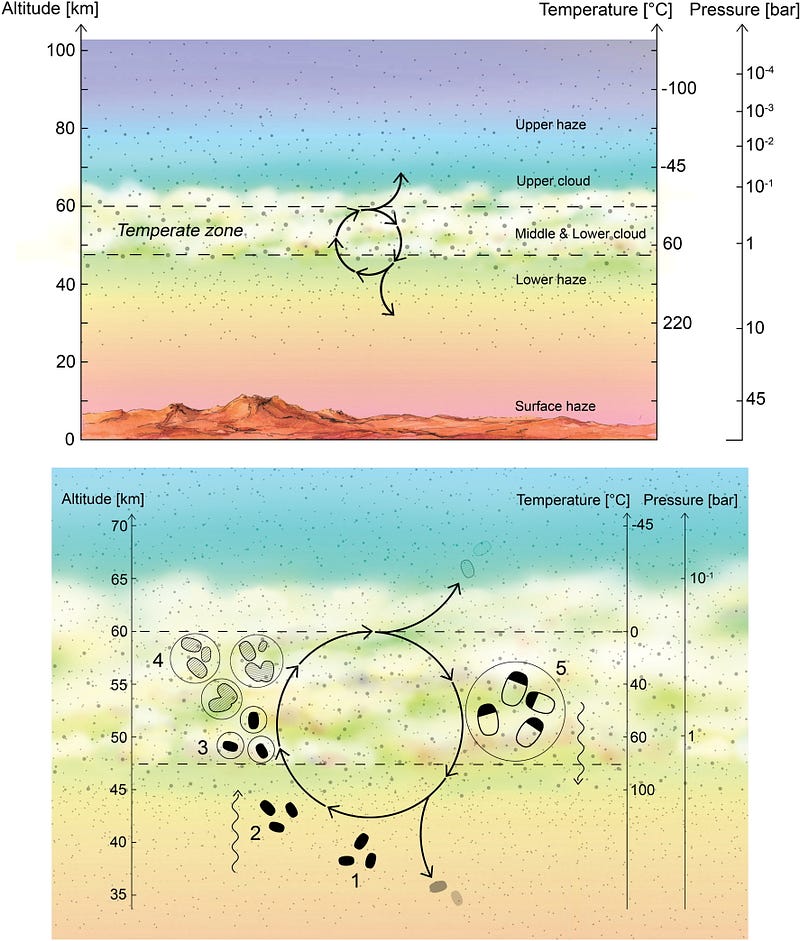Exploring the Possibility of Microbial Life in Venus' Clouds
Written on
Chapter 1: Introduction to Venus
Venus, often referred to as Earth's sister planet, is the second celestial body from the sun. It stands out as one of the brightest objects in our sky, earning its name after the Greek goddess of love and beauty. Although it shares a similar size with Earth and is classified as a rocky terrestrial planet, the differences are stark.
Unlike Earth, Venus lacks a moon and completes its orbit around the sun in approximately 224.7 days, while taking a staggering 243 days to rotate once on its axis. Consequently, a day on Venus exceeds its year in length.
While this planet may have been suitable for life in its distant past, current conditions are far from hospitable. The average surface temperature soars to 464°C, its atmosphere comprises 96% carbon dioxide, and the atmospheric pressure is 92 times greater than that of Earth. Additionally, the dense cloud cover is primarily composed of sulfuric acid, making Venus a prime example of a runaway greenhouse effect.

Chapter 2: Possibility of Life in the Clouds of Venus
Could life adapt to exist within the clouds of Venus? Recent research offers a theoretical framework for how microbes might survive in the planet's extreme atmosphere. This study posits that these hypothetical microbes could encapsulate themselves in droplets to shield against the dryness of Venus, which has an incredibly low water vapor content of around 0.002%.
The challenges facing life in Venus’ atmosphere are numerous. The concentrated sulfuric acid presents one major hurdle. While life on Earth has adapted to some extreme environments, no known terrestrial life can endure the high concentrations of sulfuric acid present in Venus's clouds, as most Earth biochemicals would degrade almost instantly under such conditions.
Adding to the difficulty, Venus's atmosphere is exceedingly dry and lacks essential nutrients. Nonetheless, life has an impressive ability to find sustenance, even in nutrient-scarce environments, such as oceanic crusts. Microbes are capable of slow growth, exhibiting flexible metabolic processes, and can recycle nutrients effectively. Additionally, meteors entering Venus's atmosphere could potentially introduce valuable compounds for microbial life.
Survival in the clouds would be energetically taxing. Microbes would need to navigate significant concentration gradients to transport necessary chemicals, synthesize complex biochemical materials, and search for sufficient nutrients. The researchers suggest that photosynthesis may be a viable energy source. Although we typically associate photosynthesis with plants, other organisms, such as green sulfur bacteria, can perform a variant called ‘anoxygenic photosynthesis’ using sulfur, which is abundantly present in Venus's atmosphere.
This BBC News video explores the intriguing question of whether life could exist in the clouds of Venus.
Chapter 3: Hypothetical Life Cycle of Venusian Microbes
Based on the above considerations, the authors propose a potential life cycle for microbes in Venus’s clouds. Here’s a simplified outline:
- Dormant spores exist in the lower atmosphere of Venus.
- Atmospheric mixing, driven by gravity waves, transports these spores upward.
- The spores act as cloud condensation nuclei, drawing water vapor and forming droplets around them.
- The droplets grow and eventually descend into the hotter regions of the atmosphere, causing the spores to dry out and enter dormancy.
- The cycle repeats.
In the words of the researchers, "We propose a life cycle for Venusian microbes that begins in the lower haze layer where desiccated spores reside in a dormant phase. The spores are transported upward by vertical mixing induced by gravity waves to a habitable layer of temperate conditions..."
This video discusses the possibility of life in the clouds of Venus, providing insights into current research findings.

This proposed life cycle suggests that the microbes could thrive within the continuous cloud cover of Venus, potentially creating a unique biosphere within the planet's harsh environment. While the challenges are significant, the possibility of life adapting to such extreme conditions is both fascinating and thought-provoking.